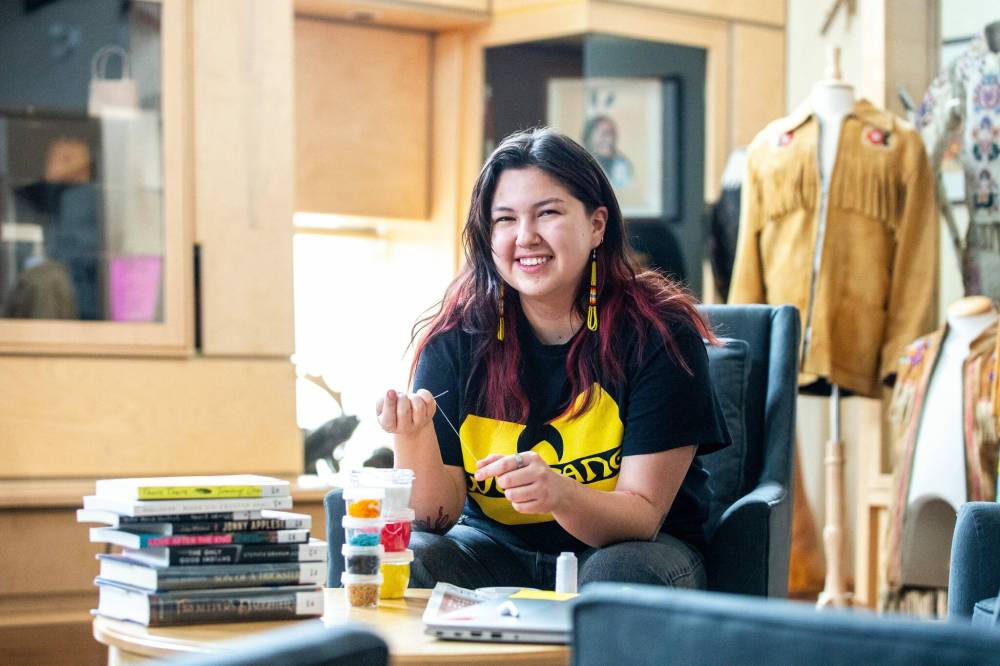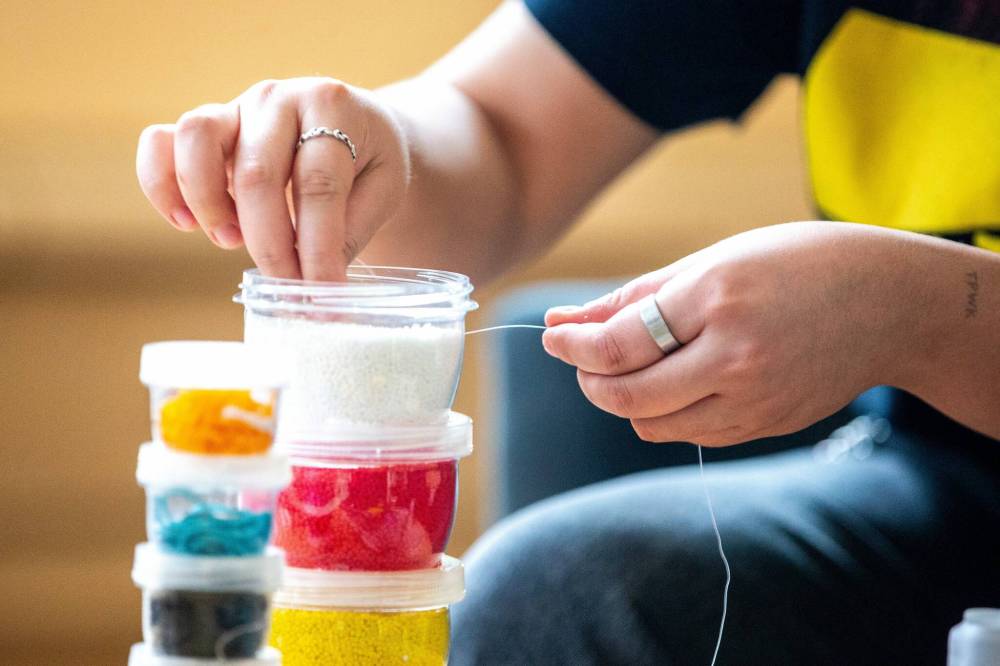Beadwork artists understand, appreciate need to pass on cultural tradition
Advertisement
Read this article for free:
or
Already have an account? Log in here »
To continue reading, please subscribe:
Monthly Digital Subscription
$1 per week for 24 weeks*
- Enjoy unlimited reading on winnipegfreepress.com
- Read the E-Edition, our digital replica newspaper
- Access News Break, our award-winning app
- Play interactive puzzles
*Billed as $4.00 plus GST every four weeks. After 24 weeks, price increases to the regular rate of $19.00 plus GST every four weeks. Offer available to new and qualified returning subscribers only. Cancel any time.
Monthly Digital Subscription
$4.75/week*
- Enjoy unlimited reading on winnipegfreepress.com
- Read the E-Edition, our digital replica newspaper
- Access News Break, our award-winning app
- Play interactive puzzles
*Billed as $19 plus GST every four weeks. Cancel any time.
To continue reading, please subscribe:
Add Free Press access to your Brandon Sun subscription for only an additional
$1 for the first 4 weeks*
*Your next subscription payment will increase by $1.00 and you will be charged $16.99 plus GST for four weeks. After four weeks, your payment will increase to $23.99 plus GST every four weeks.
Read unlimited articles for free today:
or
Already have an account? Log in here »
Hey there, time traveller!
This article was published 12/02/2024 (620 days ago), so information in it may no longer be current.
Manitoba Indigenous beadwork artists say learning circles have shaped their understanding and appreciation for the cultural practice, helping them to teach others.
Every Wednesday, about 15 beadworkers gather around a table at the Manitoba Indigenous Cultural Education Centre surrounded by stacked containers of colourful beads, fabric, thread and sewing needles.
The smell of freshly baked bannock and brewed tea wafts throughout the centre located on Sutherland Avenue. Collections and library assistant Danielle Mason says it’s her job to prepare the bannock and help facilitate the weekly drop-in event Beads & Tea.

MIKAELA MACKENZIE / WINNIPEG FREE PRESS
As a Cree beadwork artist from Peguis First Nation, Danielle Mason says the practice is very sentimental for her because she began beading at 12 years old alongside her younger sister.
“Having that opportunity to kind of facilitate and share our knowledge is something we love to do,” Mason says. “We find a lot of people are just looking for that sense of community again.”
The centre started the table in October to teach people how to bead and create a safe space to ask questions and work on their projects among other Indigenous artists.
In honour of February’s I Love to Read Month, the centre changed the beading table name to Beads & Reads, which includes sharing cultural stories from their archive of more than 14,000 books.
As a Cree beadwork artist from Peguis First Nation, Mason says the practice is very sentimental for her because she began beading at 12 years old alongside her younger sister.
“It’s given me a lot more calluses on my fingers,” she says. “There’s always something on my needles.”
While Mason is constantly brainstorming new project ideas, she is currently beading a traditional octopus bag and finding the motivation to finish a pair of mukluks with beaded aliens on them that she started over a year ago.
“I’m very stubborn when it comes to a lot of my art, so having something where you kind of have to take your time and move with it, rather than being very hard-headed has been a bit of a learning curve,” she says.
Francophone Manitoba Métis artist Melanie Gamache also spends a lot of time beading at a table. Her friend taught her the two-needle beading technique during the winter of 2014, which inspired her to create her business Borealis Beading and teach others.
“There wasn’t a lot of people at that time — that’s like 10 years ago — that were teaching beading or even teaching the culture,” Gamache says.
Her passion for beading was amplified by her curiosity to learn the stories and cultural history behind Métis beadwork, she says.
Gamache shares this knowledge through workshops she refers to as Métis cultural learning experiences, where she teaches people the evolution of beadwork based on the materials the Métis were using, how they were used, how they were living on the land and how the practice has been impacted by colonialism.
This March, Gamache is launching her Métis Connections experience, which is a three-hour interactive presentation and beading activity. She will be teaching staff members at two schools in Eastern Manitoba.
Her goal is to provide adults with the resources and tools allowing them to help pass the knowledge onto younger generations and spread cultural awareness more organically within the school curriculum.

MIKAELA MACKENZIE / WINNIPEG FREE PRESS
“When I’m teaching kids, they love putting their hands in the beads, and they are so proud of themselves when they rub their hand over their finished project,” Jessie Jannuska says.
Dakota, Ojibway and settler artist Jessie Jannuska has been teaching beading workshops to more than 300 students at École Van Wallegham School in Linden Woods since September.
“When I’m teaching kids, they love putting their hands in the beads, and they are so proud of themselves when they rub their hand over their finished project,” Jannuska says.
She understands the importance of creating opportunities for children and others to learn Indigenous beadwork, especially because it wasn’t something she learned growing up, because of the impact residential schools has on her family from Canupawakpa Dakota First Nation.
It wasn’t until Jannuska joined a beading group at Brandon University where she was able to connect with her culture and identity by beading with elders, knowledge keepers and other students in the group.
She graduated with a bachelor’s degree in fine arts and has been teaching beadwork more consistently since 2018.
This is the second year she has taught beadwork twice a week at an elementary school.
“I’m just trying to be a role model,” she says. “Sharing the cultural practices means so much to me… it’s just good to spread the knowledge that this is out there, (people) need to know what’s happening and what the cultural practices are of people that were first on this land.”
She says the Grade 4-8 students are working on a mural featuring two jingle dress dancers standing beside a river where the students are attaching beaded blades of grass, bear paws, flowers, insects and more — a project the students can reflect on for years to come.
fpcity@freepress.mb.ca

